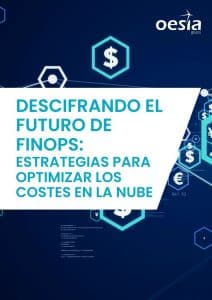
Companies in today’s digital age are increasingly relying on the cloud to support their operations and technology services. However, the convenience of the cloud brings financial challenges, and this is where FinOps (Financial Management in the Cloud) comes into play. In this insight, We will discuss the FinOps landscape, its growing importance and some important techniques to optimize costs in the cloud. techniques for optimizing costs in the cloud.
FinOps: what is it and why adopt it?
In recent years, it has become more important for organizations looking to control costs in the cloud while maintaining agility and innovation. To provide a clearer view of cloud spending and ensure it aligns with business, organizational and technology objectives, the FinOps concept combines the best practices of finance and operations..
Organizations around the world are increasingly adopting cloud computing, especially FinOps. There are a variety of reasons for this, among which are the flexibilityhigh availabilityavailability, the security cyber security and decrease in the costs of the of the physical infrastructure.
However, as with any other strategy, investment optimization and savings can only occur if there is effective service consumption management. effective management of service consumption. This is where the FinOps concept stands out.
FinOps, a combination of the words “Finance” and “Operations,” is a framework for managing an organization’s operating expenses. framework for managing an organization’s operational expensesoften in conjunction with cloud and cloud computing.
The primary goal of FinOps is to help engineering, finance, business and technology teams within the same organization to achieve business value and maintain financial accountability for cloud services..
Challenges in cost management in the cloud
The dynamic nature of the cloud poses unique cost management challenges. Lack of visibility, complex pricing structures and lack of control can result in unforeseen costs. By providing a structured approach to tracking and optimizing expenses in the cloud, FinOps addresses these issues. in the cloud, FinOps addresses these issues.
Gartner predicts a 29.8% increase in 29.8% increase in spending of end users in Infrastructure as a Service (IaaS) by 2023. This may be due in large part to:
- The lack of a complete view of all services used by organizations in the cloud.
- Expenditures in excess of budget and estimates.
- Failure of financial management to take advantage of supplier discount options.
- Difficulties in monitoring investments in conjunction with all suppliers and stakeholders.
In this scenario, FinOps can help the company to have a macro view of the cloud solutions used in the operation, reducing unnecessary service costs, resulting in resource optimization and higher profitability. of the cloud solutions used in the operation, which reduces unnecessary service costs, resulting in resource optimization and increased profitability.
FinOps Strategies
- Equipment. Establishing a FinOps team to monitor and control costs in the cloud ensures consistent and effective management over time.
- Continuous monitoring and analysis. Use tracking and analysis tools to monitor costs in real time and determine trends and areas for improvement.
- Cost allocation. Allocate expenses to specific projects and teams to increase transparency and accountability.
- Automation. Use automation to deactivate or increase resources according to demand, reducing unnecessary costs.
- Education and training. Teach teams about FinOps and promote a culture of cost optimization throughout the company.
- Tagged. The success of FinOps largely comes from the implementation of tagging policies, covering all the details of resource identification, whether for a single public cloud or multicloud.
Best practices in cloud cost management
Now that you know how the method works and how important it is to implement it for better management of cloud services, you may wonder what problem FinOps solves, when and how to implement it. Here are some important actions to take into account:
- Use only what is strictly necessarywith a good design of capacities that meet the requirements.
- Establish a workflow communicating operations and finance, developing documented processes with well-defined actions and responsibilities.
- Take advantage of discounts and conditions and conditions of suppliers; sometimes if we have more resources we can have greater savings.
- Setting financial goalsestimating and managing budgets in a clear and concise manner.
In conclusion
In a world where cloud is an important part of business strategy, FinOps has become a crucial component in ensuring that cloud investments are efficient and aligned with business objectives. Organizations can control costs in the cloud, improve efficiency and keep innovating in an increasingly competitive market by implementing FinOps strategies. Financial management in the cloud is now a necessity.
Felipe Bolaños Bonilla, Cloud Architect, Cloud Competence Center of Grupo Oesía
